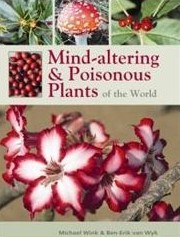Mind-altering & Poisonous Plants of the World
Since ancient times, poisonous plants and mushrooms have been used for hunting, murder and magic. Most cultures of the world have learnt to avoid these plants or to use them with discretion. Many of the plants are still widely used as traditional medicine for their therapeutic value in the treatment of diseases. Others are popular as recreational drugs or for ceremonial and spiritual purposes. Hazardous plants are commonly used as garden ornamentals, pot plants or florist flowers, and many people are no longer aware of the inherent dangers posed by toxic plants or medicines derived from them. Also included in this illustrated guide are plants causing irritation and inflammation of the skin and mucous membranes. A special focus is on psychoactive plants which can have stimulant, sedative, hypnotic, narcotic or hallucinogenic properties, such as coca, opium, cannabis and scopolamine.
This guide gives the reader a bird's eye view of all the famous and well-known poisonous and mind-altering plants of the world. The book is presented as a compact, colourful and scientifically accurate reference text. It covers more than 1200 of the most important plants that people are likely to be exposed to. More than 200 of the most important poisonous and mind-altering plants are treated in depth in short monographs, covering their diagnostic characters, region of origin and distribution, active ingredients, toxicity, symptoms of intoxication and possible modes of action. Each monograph provides information on first aid treatment. More than 550 superb colour photographs facilitate plant identification.
This guide is a must for gardeners, farmers, veterinarians, students, botanists, pharmacists, chemists, doctors and Poison Centres. The compact format and encyclopaedic style will be useful to rapidly access information on poisonous plants.
Zodra de gebruiker ten minste één product heeft bekeken, is dit fragment zichtbaar.
